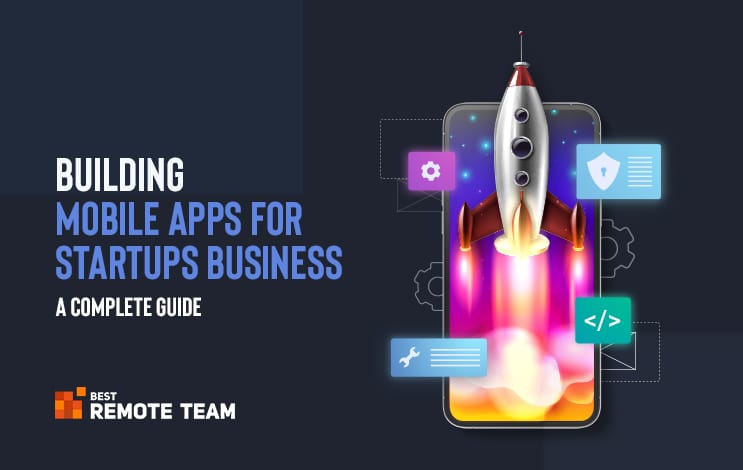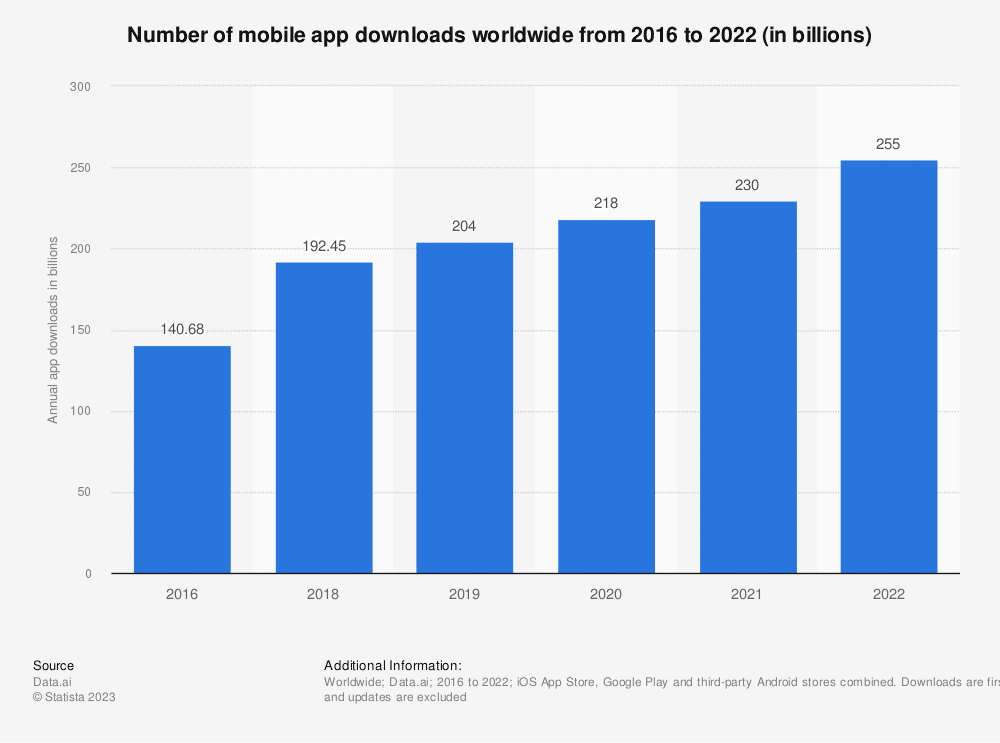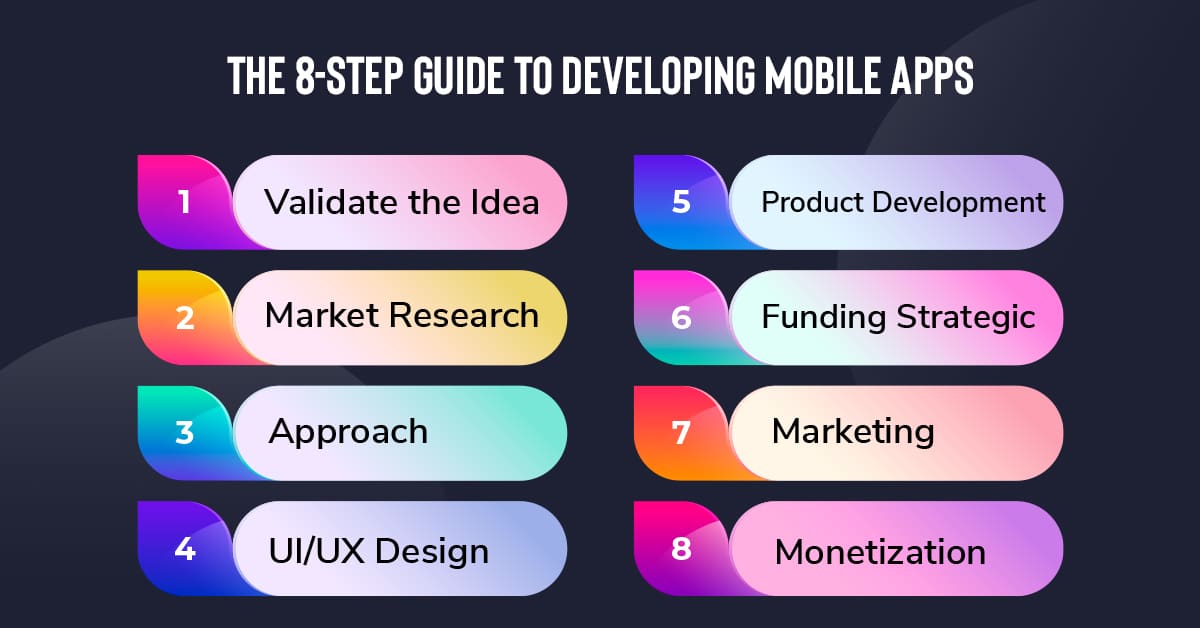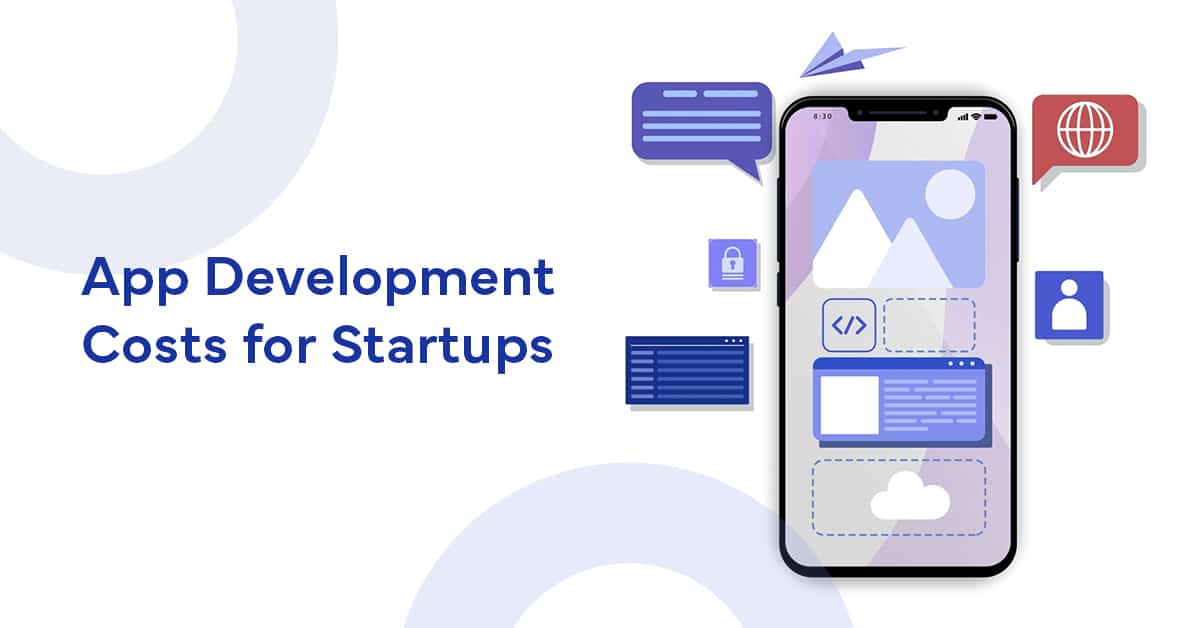8-Step Guide to Mobile App Development
We have identified all the important steps that you need to implement during app development for startups.
1. Validate the Idea
Having an idea is never enough. Your idea may or may not work in the competitive mobile app market. So, you need to go above and beyond an idea to ensure you are marching in the right direction.
Start by listing the ideas that you have for the mobile application. The list of ideas will help you give you a great place to start. Take a step back, look at the list, and go through each idea. Check if you really believe it will work.
Secondary research is a quick gateway to determining the possibility of success with an idea. it will give you insights into existing applications. You will know the gaps that exist and how consumers use these solutions.
If you feel slightly more positive about the secondary research insights for a particular solution, you can dive into primary research. Talk to real users, ask them what they think, and connect with them on the possibilities of your idea.
2. Market Research
Once you have validated the idea based on the insights from the customers and the Internet, you will begin working on the in-depth research. Market research will reduce the chances of app failure. While you are conducting research, you need to study the following:
- App Usage: Check how consumers are using mobile app solutions. What kind of behavior do they exhibit when using the applications? What makes them love a mobile app? What do they expect from a solution?
- Competition: The competition landscape is huge and diverse. You should identify every competitor operating in your niche before you begin working on the application. Start by understanding what makes the competition tick. Know what is their mantra for success and what makes them connect with the users.
- Failed Apps: Just like successful apps, studying your failed apps is equally important. You should know why the apps failed.
It could be anything from failure to notice how consumers use it to determining the product-market fit. This could impact the success. Knowing what’s been missed can give you a better direction for app development.
3. Approach
It is important to choose a suitable approach to deliver a successful mobile application. Whether you want to go with native development or plan for hybrid development is an important choice.
If you go with the native app development approach, you might limit your reach to the particular platform. However, you get to develop a high-quality solution that can increase user experience. The cost of native app development doubles, as you need to spend separately for each platform.
In case you choose a cross-platform app development approach, you can reach all the users in your target market. However, your app may not exude a native-like appearance or performance. This can restrict the experience.
Each approach has a definitive use case, and you can choose to go with one as and when required. Once the approach is clear, you can identify the tech stack associated with the approach. For instance, if you are planning iOS app development, you can choose to use Swift or Objective-C. Your development environment would be iOS-specific.
You would need to make similar choices for Android and cross-platform app development.
4. UI/UX Design
A successful mobile app for startups is a result of a defining UI/UX design. If you take the UX-led approach, you can guarantee extensive usability of the solution.
Planning your user experience is crucial. It will determine if people are likely to engage with the application and use it. At the same time, if you define the experience design, you will ensure that the buttons and all the physical elements are rightly placed. It will ensure that the users can move their fingers and access the elements.
A UX-led app design will ensure that the users don’t face any trouble when loading the application. It will reduce friction during usage.
The interface elements and navigation should be intuitive and usable. You should use the design guidelines for the specific platforms to design the interface for the mobile application.
When designing the interface, make sure to include suitable layouts. Also, use appropriate fonts that will encourage more users to engage with the application.
5. Product Development
Once the designs are ready, you should begin working on the development. Development is a phase-wise process. If you begin building a mobile application at a stretch, you might complicate the code and ruin the experience.
Break the entire task into smaller chunks. Now assign each chunk as a task to a particular developer. Divide it into smaller sprints and codes. Begin building each function or unit of the task.
Assign the unit to the testing team so that they can work on assessing the code. It will also help with debugging and evaluating the code quality during the build stage. Commit each unit as and when it is tested and finalized.
Repeat this till an entire function is ready, and then test the function. A build-to-test model can enhance the processes and deliver a bug-free mobile application.
To ensure a smooth development and release of bug-free code, you should know how you aim to hire developers. You can have in-house developers working in tandem with the rest of the team to develop the application.
However, in-house developers can become inefficient if you work on a limited time and budget. You must outsource app development to an experienced team. They will take care of the development, have the right infrastructure, and release the code on time. Outsourcing will also reduce hiring efforts and costs.
6. Funding
Budget is critical to developing a mobile application. Whether you are planning an MVP or a full-fledged solution, you need to have the funds to back your plan.
You can connect with investors or host a plan to fund your app from your account. Having a solid funding plan is a good idea to ensure you have enough backing for the development.
Venture Capitalists are eager to spend money on applications they believe will turn into profitable outcomes. However, it is important to give your best pitch to get their interest. This should include why your application will help users. You should also mention the problem you are solving, and when you believe it will be profitable.
Your VCs are equally interested in your marketing plan, your strategy to monetize the app, and ways to gain maximum reach.
If you don’t want to pitch to VCs, you can choose to take a startup loan to fund your application. Bootstrapping your way into the business is also a great step to fund your mobile app development.
Defining the funding strategy alongside development will ensure you don’t need to close shop on your app idea.
7. Strategic Marketing
Marketing is key to getting more people to use the application, and engage the audience. If you haven’t started on the marketing strategy for your app, you are losing an opportunity for conversions.
The stage where you are building a product is when you need more people to engage and recognize you. They would also become your Beta users and offer feedback. The solid community would back your venture and help you realize your conversion dreams.
You should start by identifying the organic methods of reaching people. This would include skyrocketing your efforts with podcasts, blogs, social media posts, and content that would engage the users. You can also rely on building the community to improve marketing.
When you are nearing the app release, you can intrigue the users with a glimpse of the app. Use sponsored marketing to increase visibility.You can also use push notifications for this purpose.
Each phase of product development and marketing should be properly timed if you want to gain maximum value from it.
8. Monetization
Answering the question- of how would you gain money from your mobile application is crucial. You must maximize users and get returns on your investment via the mobile app. The monetization strategy will determine when you will break even and how to generate profits.
You can create subscriptions within the application, offering a free version to the users. The users will have to pay for certain premium features. In-app ads are a great monetization feature. You can run as many ads as you want, and generate revenue.
Lastly, you can have a fixed cost for the app download.
Development Cost for Mobile App Startup
The overall development cost of the mobile app startup can vary according to the complexity of the mobile application. It will also depend on the development approach you have chosen.
If you are planning a native-only application, you are likely to spend more. You will need platform-specific design and development experts.
You will need designers who have an understanding of iOS design guidelines. Similarly, they should be proficient with Objective-C or Swift (the programming language you have chosen).
If you are planning Flutter for cross-platform app development, you can hire a single resource. They can help with the entire design and development. Let’s look at the cost of Flutter, iOS, Android, and React Native app development cost.
Flutter App Development Cost
The average salary for Flutter app developers is Rs. 800,000. The hourly rate for a Flutter developer is approximately $30.
If you calculate a project that takes 250 hours to develop an average mobile application. The Flutter app development costs $7500 to build a simple application.
Android App Development Cost
The average hourly rate for Android app development is $25*. If it takes about three months to develop a simple mobile application, you will need to pay $18000.
iOS App Development Cost
The approximate hourly rate for iOS developers is $35*. It can take up to 3 months to develop an iOS application. The total cost of development is about $26000.
React Native App Development Cost
The hourly rate for React Native developers is $15 to $25. If it takes about one to two months to develop the React Native app, the overall cost is approximately $11000.
Conclusion
It is crucial for mobile app developers to follow all the steps for efficient mobile app development. If you don’t validate, you don’t define the market fit. It is possible your audience is not keen on the mobile app. This means all your other efforts will go to waste.
If you don’t budget the application, you may not create the ideal solution. When you include research, buyer persona, and a deep dive into planning, you can plan for the risks.
Partner with the best app development companies for startups to ensure complete development and post-release support. Best Remote Team helps identify the best team and specialists to support your app development goals. Connect with us regarding your requirements to release productive app solutions.







